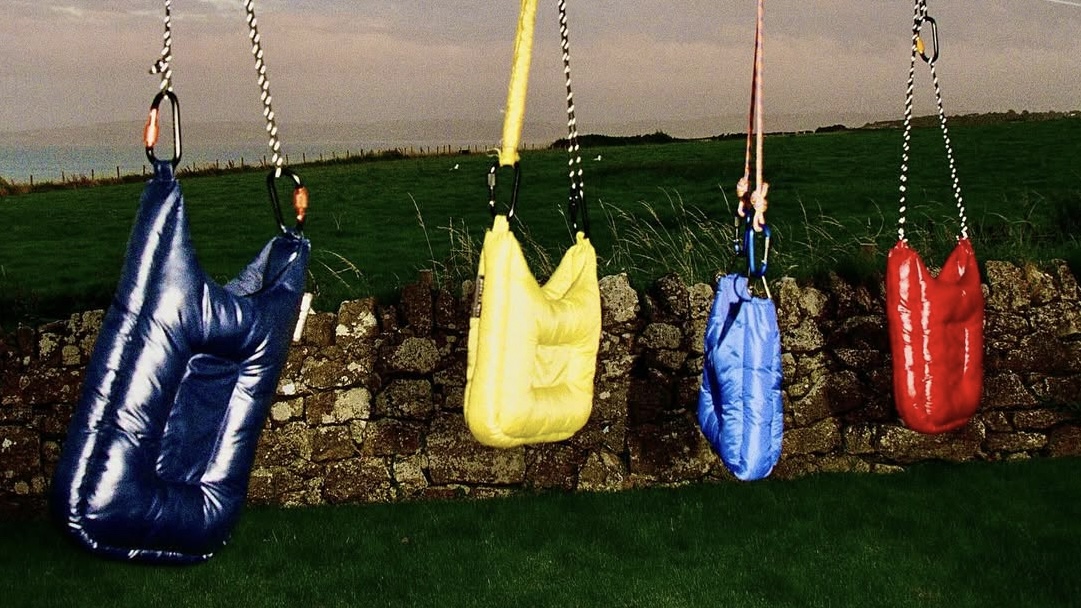Manchester’s Make It Wet is making waves.
Meg Hughes is flipping technical fabrics into striking silhouettes inspired by the ocean. From being inspired by fishing trips with her dad to playing around with deadstock materials, MIW has now worked with Nike on campaigns and recently lit up Manchester Fashion Week.
MIW pieces are unmistakable: with bold, technical silhouettes like the Extreme Pleat Trousers to statement puffer bags rooted in sustainability. With MIW, Meg has harnessed her love for the seaside and turned it into a brand that is shoring up Manchester’s burgeoning creative scene.
We caught up with Meg to find out more about Make It Wet’s journey so far. Swipe for the full conversation.
For the people who may not know you or Make It Wet, give them a breakdown of who you are and what you do?
I’m Meg, a Manchester-based fashion designer. After graduating from Manchester Fashion Institute 2 years ago, I set up my brand, MIW. The brand was first created through my love of garments that are hard to come by. I started designing and making clothes that I couldn’t find elsewhere. The designs I create are inspired by fishing and the outdoors, often using waterproof fabrics to create bold silhouettes.
What’s an ideal day for you to spend outdoors?
Ever since I was a little girl, I’ve always fished in Anglesey with my dad. My ideal day outdoors would be spent with him fishing for mackerel and bass to BBQ for dinner. Being by the sea with my dad is where I feel most inspired.
From starting with bags to pushing garments like your Extreme Pleat Trousers, what’s the journey been like to get to these latest pieces?
I found it difficult to move from creating accessories to garments. There’s so much more to think about when it comes to clothes: the fit, the movement and the sizing. I’d done lots of sketching and doodling of the trousers that were inspired by the shape of a fish, and I merged this with Japanese style to give them the fresh look I wanted. I was working on the pattern for my extreme pleat trousers for genuinely months.
I knew exactly how I wanted them to look and fit, but translating this to fabric was hard. After about 10 toiles, I finally created the shape I’d been after. Hunting for the right fabrics is always important; I knew that the fabric had to be heavyweight and durable. I’m happy people like them as much as I do!
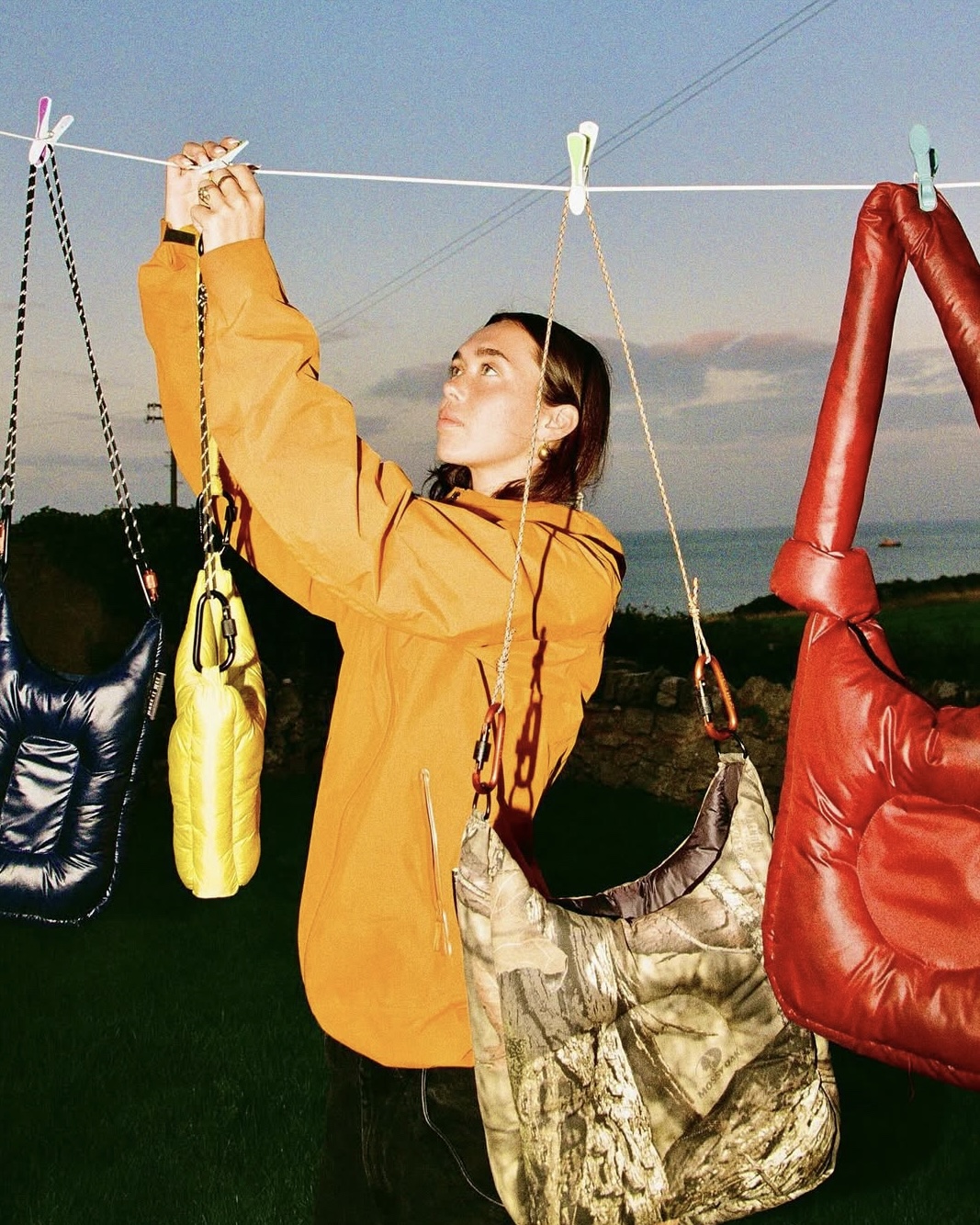
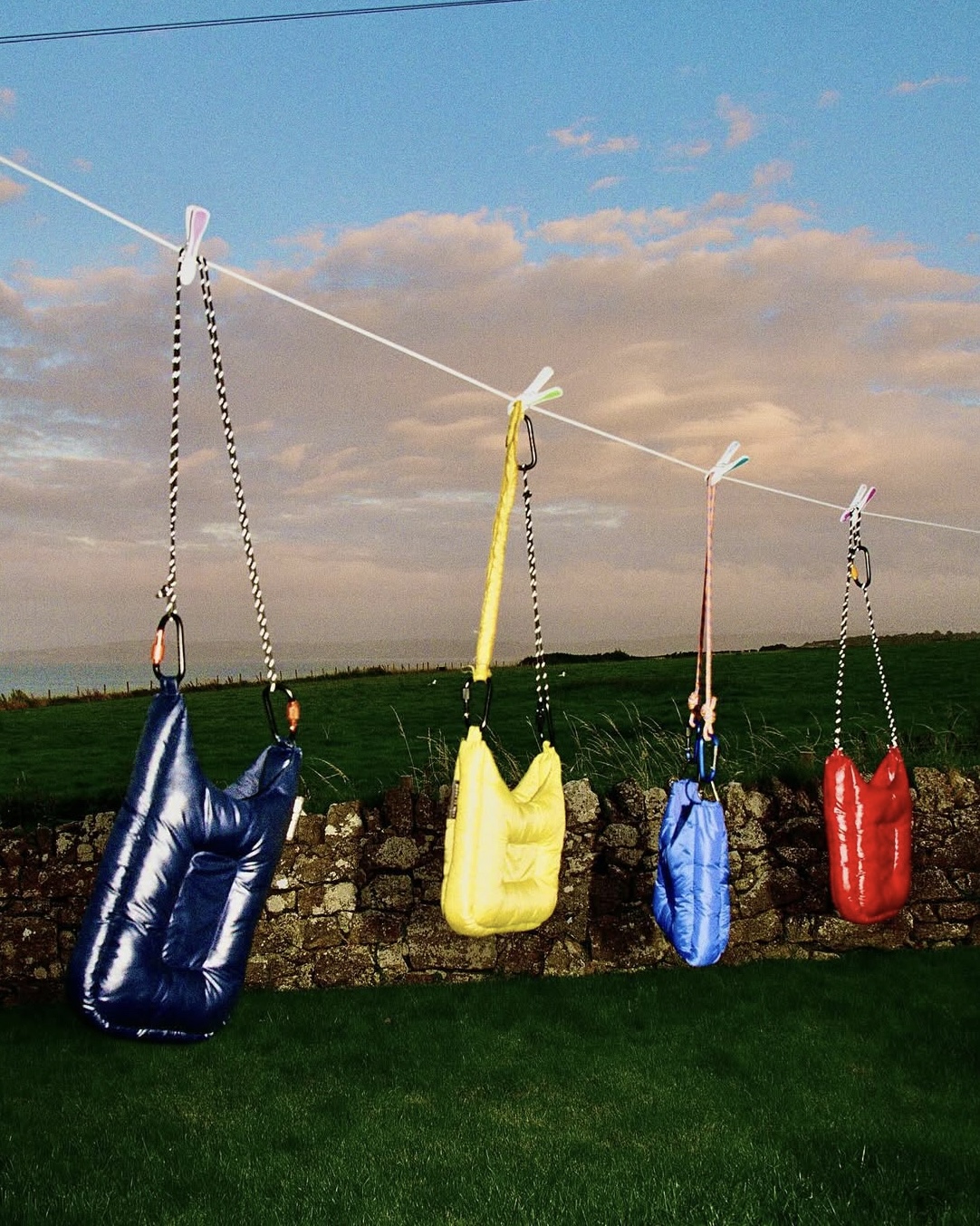
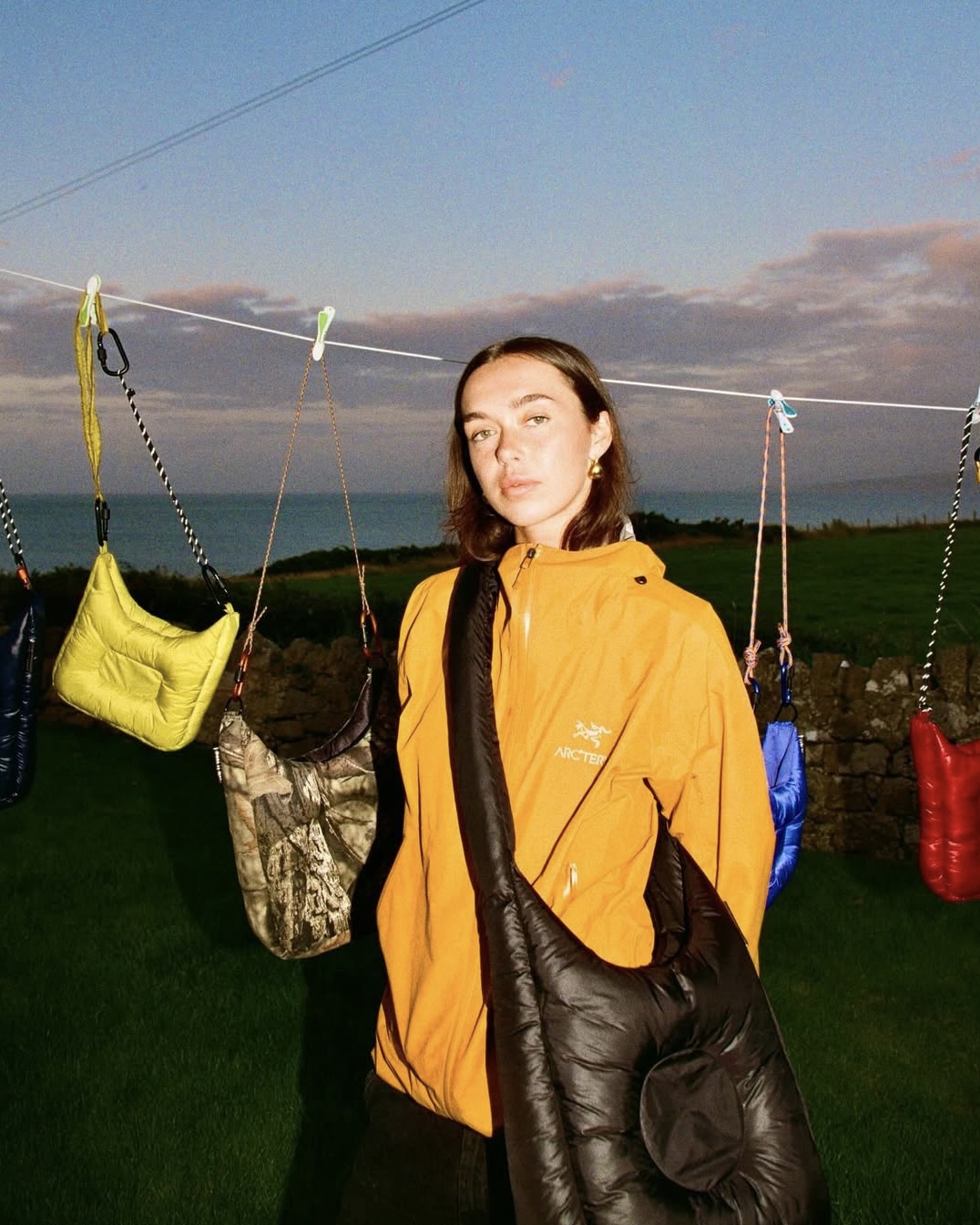
Talk to us more about your work with Nike. How did this come about?
Nike’s the biggest brand I’ve worked with so far, and I was absolutely gassed when they approached me about the job. It was a quick turnaround, but to see my work in Nike stores is something I’ll never forget.
The Nike pieces were crazy. What was your thought process when designing those pieces?
When designing for a brand, there’s a brief to meet. This brief was to create 8 looks to push their new trainers, the DN8’s. The trainers had 8 bubbles on the sole and were aimed at their young street alchemist. The block-coloured design of the shoes aligned well with my style. I’ve always loved creating huge, captivating silhouettes, and the block colours made them even more dramatic and impactful.
I wanted to keep Nike’s ‘street style’ in mind when creating this collection; the hooded garments and balaclavas really keep the collection youthful and playful. Materiality has always been a key focus for me, so I made sure to integrate that into this project as well. It felt natural to bring the circular techniques from my previous work.
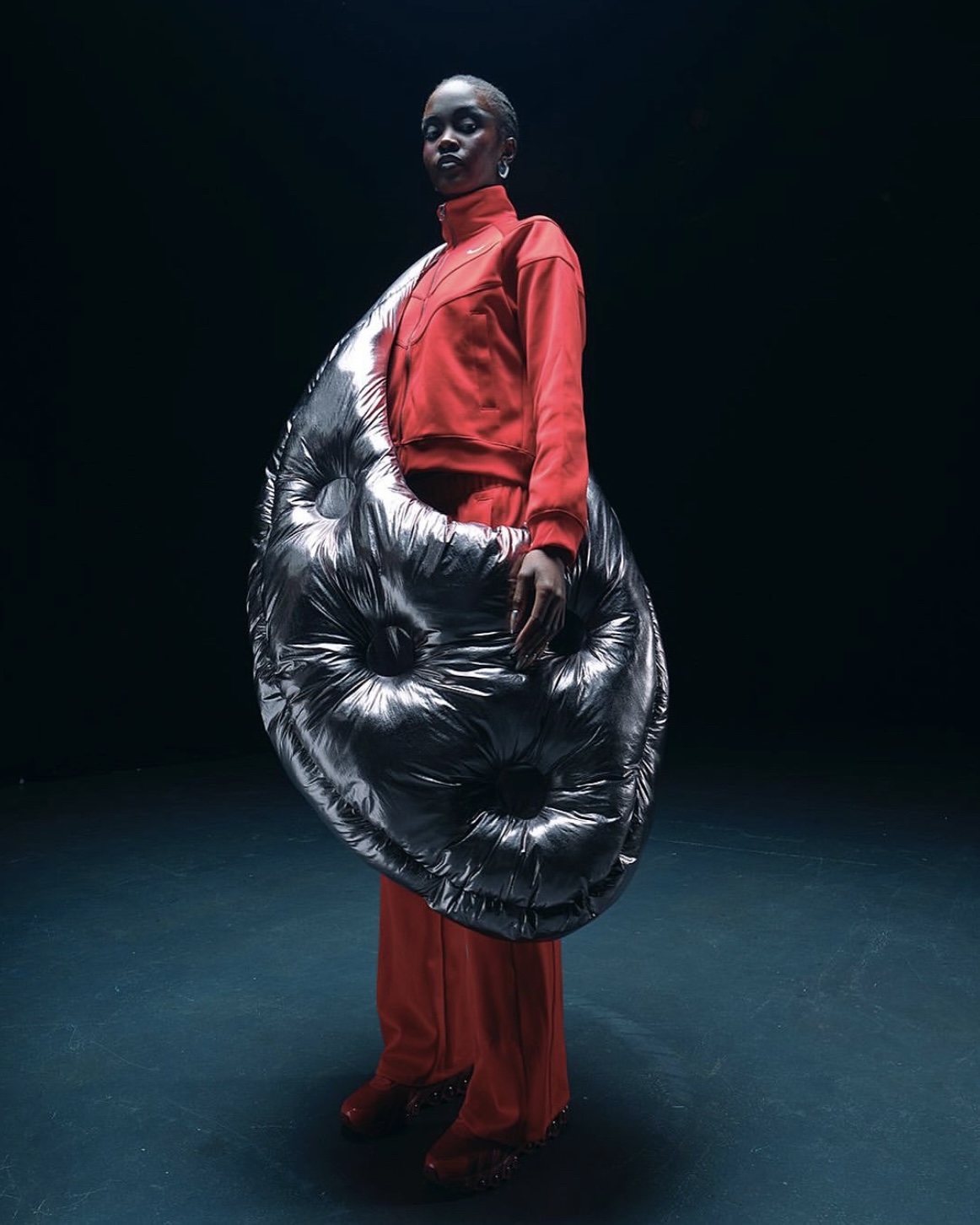
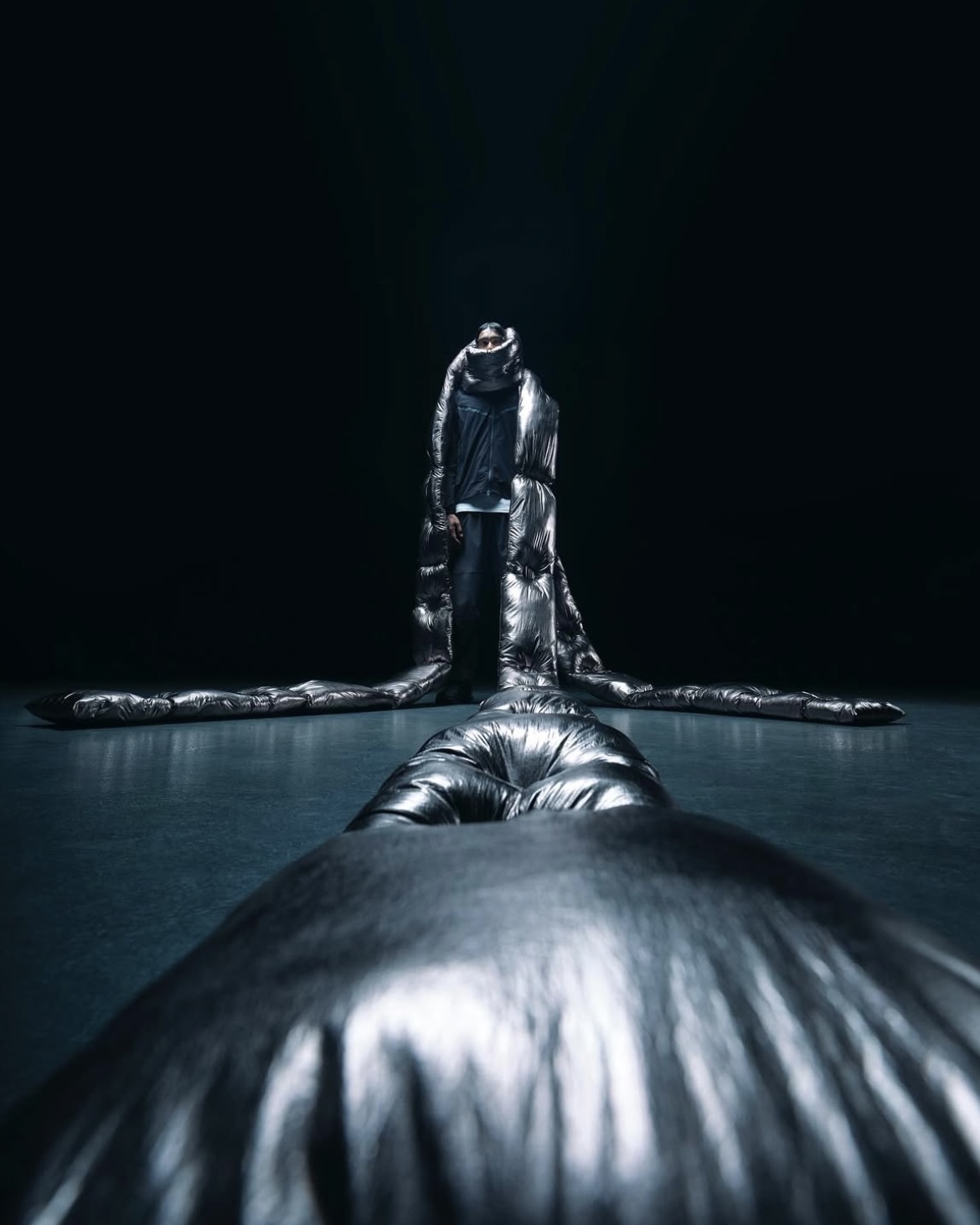
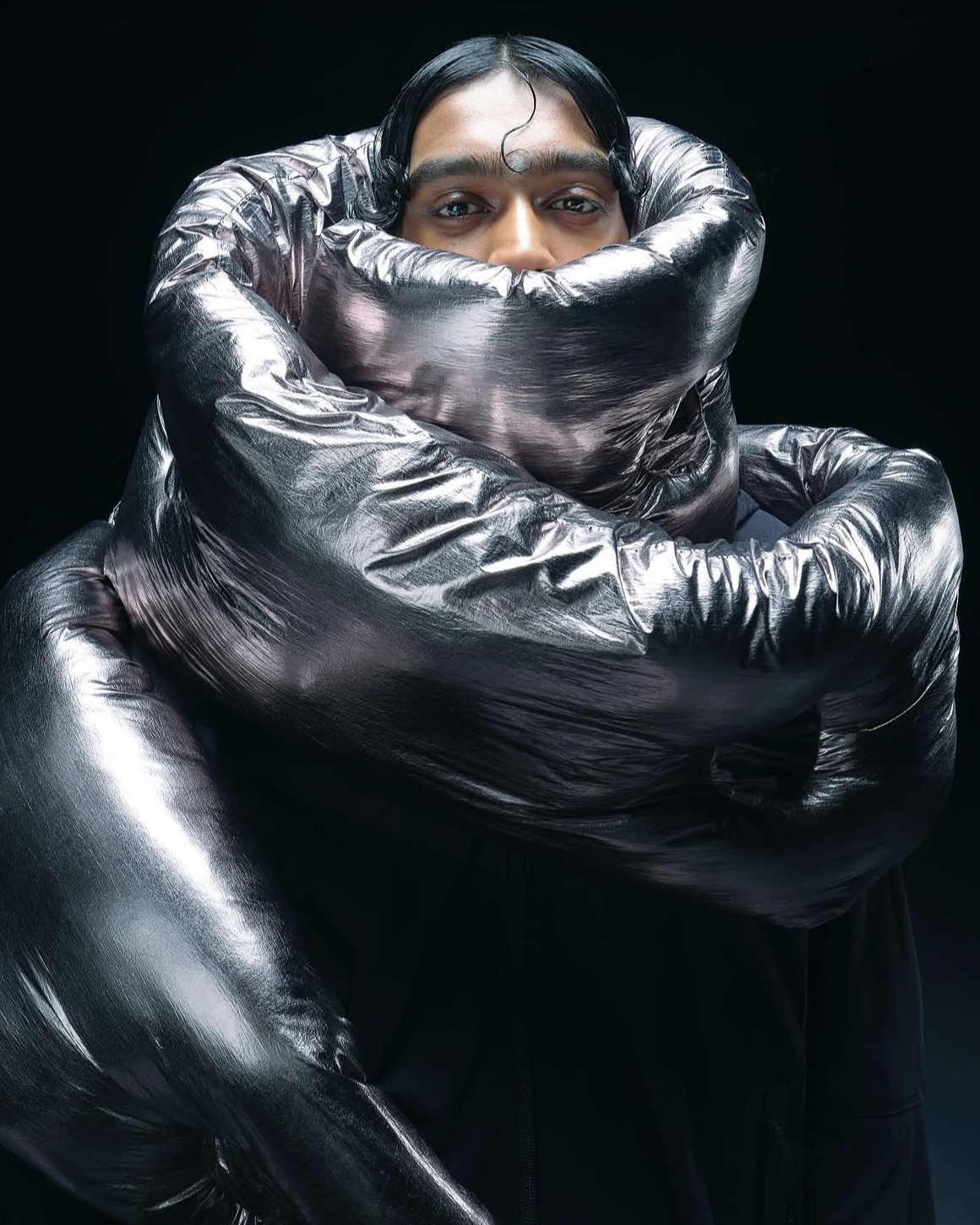
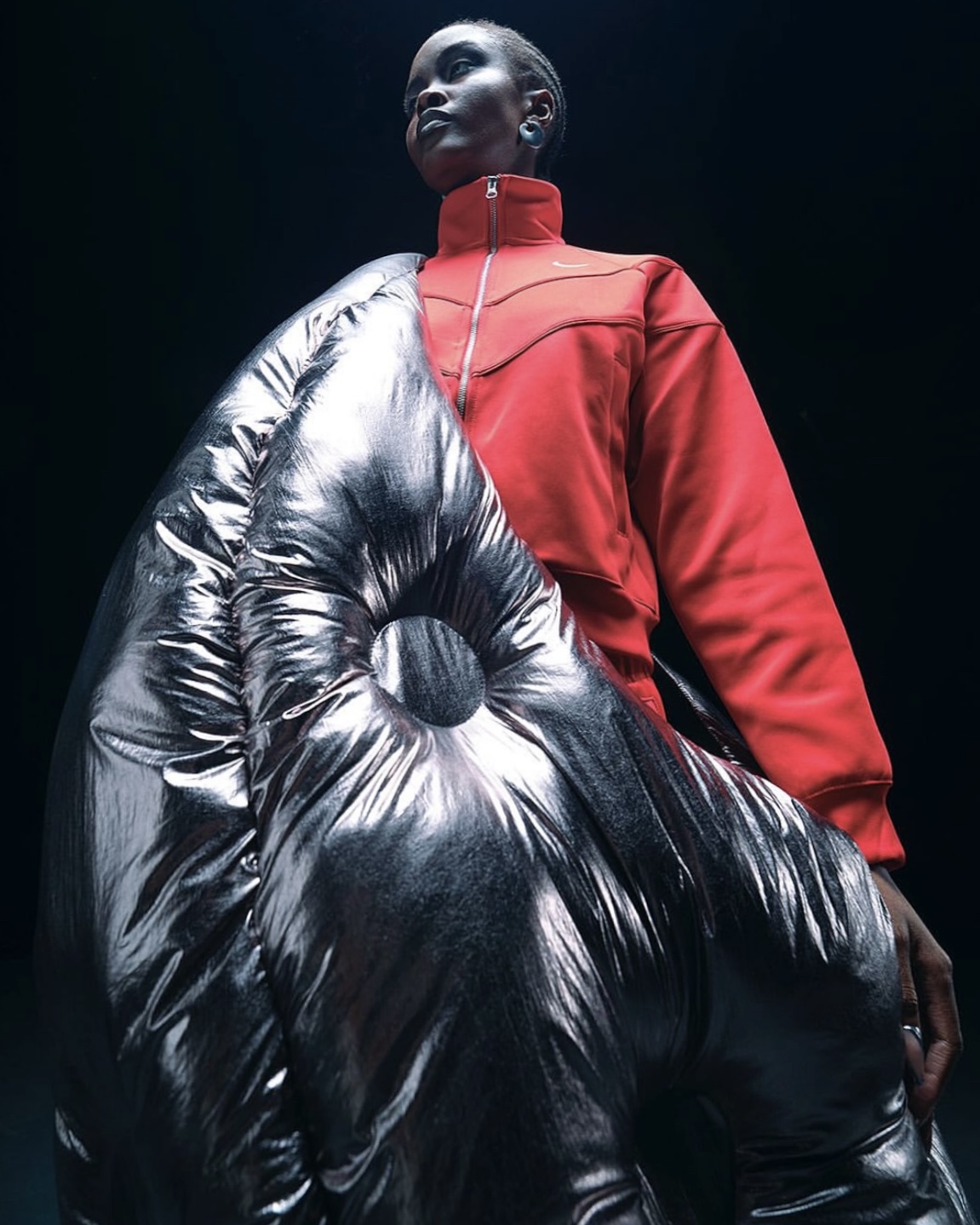
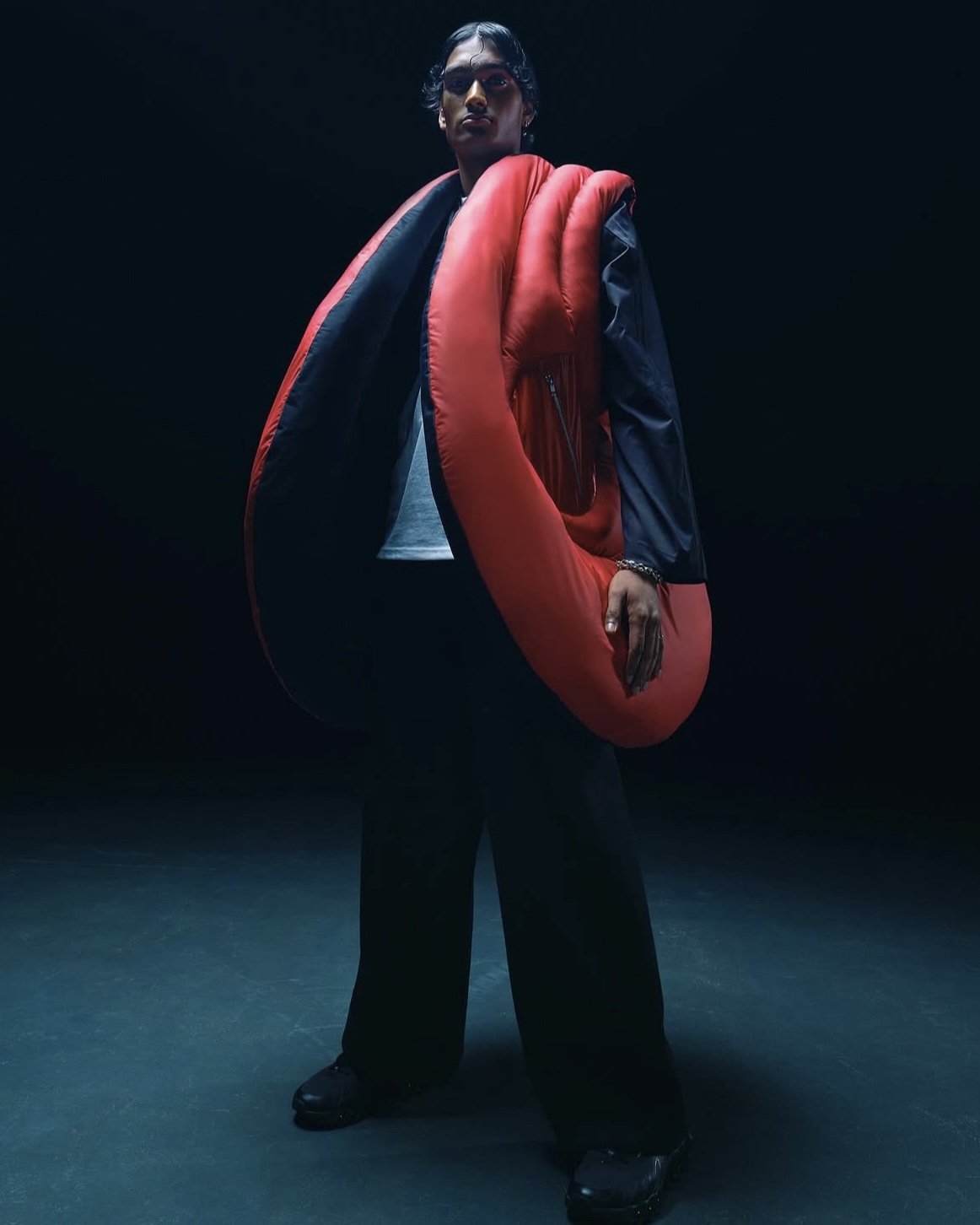
Images By: @ryangarwoodphoto
Creative direction & production agency: @wondercollab
What does your average day look like?
In the morning, I head straight to the studio and normally spend at least an hour cutting trousers out for my next orders. I do this in the morning because it doesn’t take much brain power, and I’m usually still half asleep. To be honest, no two days look the same, whether I’m planning a shoot, designing new pieces or making up orders. I get to work with my bestie, which is mint, it usually gets to about 5 and we’re fully delusional chatting shit.
What’s the piece you’ve made that you’ve been most proud of so far?
The proudest thing I’ve made so far is the Wetsuit, which feels like a true representation of my design philosophy. I’m proud of this piece because of how technical it is to make, the material leaves no room for error, and the pattern took me months to perfect.
Talk to us some more about ‘The Wetsuit’: what were the inspirations behind this piece?
The concept of the wetsuit top was to quite literally look like a wetsuit, wrapping around the body like a second skin to keep the wearer warm. The tops are water-resistant, to align with my brand’s concept. The wetsuit collection has been in the works for quite some time; I can only apologise to the customers who have been asking after these tops for so long!
I wanted it to fit perfectly. I’ve made some in a lightweight, almost translucent material that keeps a seductive touch to the brand. I’ve also designed a few pieces using waxed cotton. Known for its durability and water-resistant properties, waxed cotton has been a trusted fabric for outerwear for centuries. It’s made by coating cotton with wax to create a barrier between water
You never seem to shy away from working with difficult materials in your work. How much experimentation goes on within the process of making any garment?
Working with ripstop and other technical fabrics presents its challenges. I often find myself switching out sewing feet on my machine, especially when working with thin, slippery fabrics that can be a nightmare to sew. When a fabric is particularly tricky, I usually line it with something less slippery to help minimise movement after pinning. Despite the challenges, the unique look of ripstop fabrics truly excites me. For my bags, I only use deadstock fabrics, which means the size and shape of each one depends on how much scrap material I have. Exploring new materials is always a buzz and keeps my work fresh and exciting.
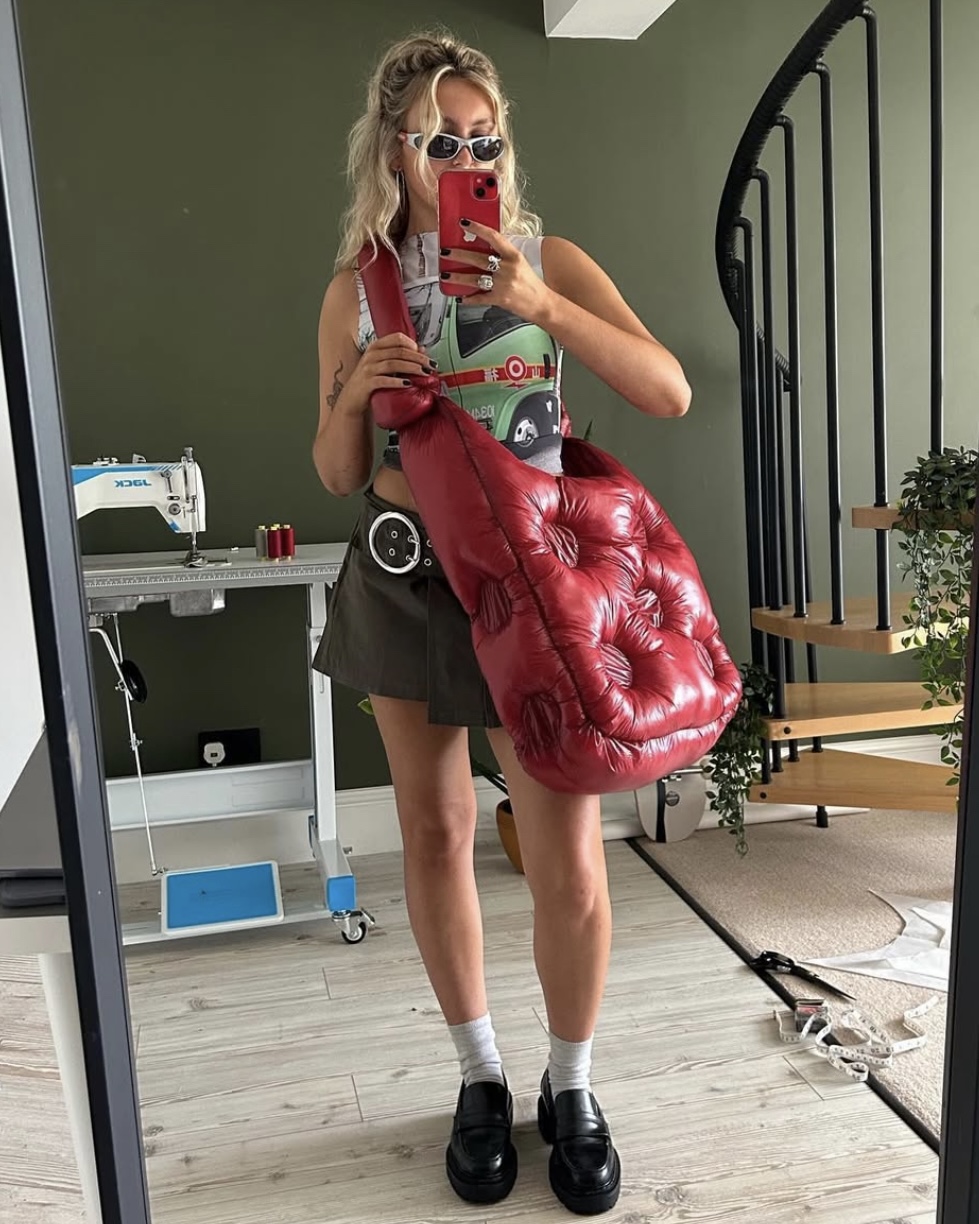
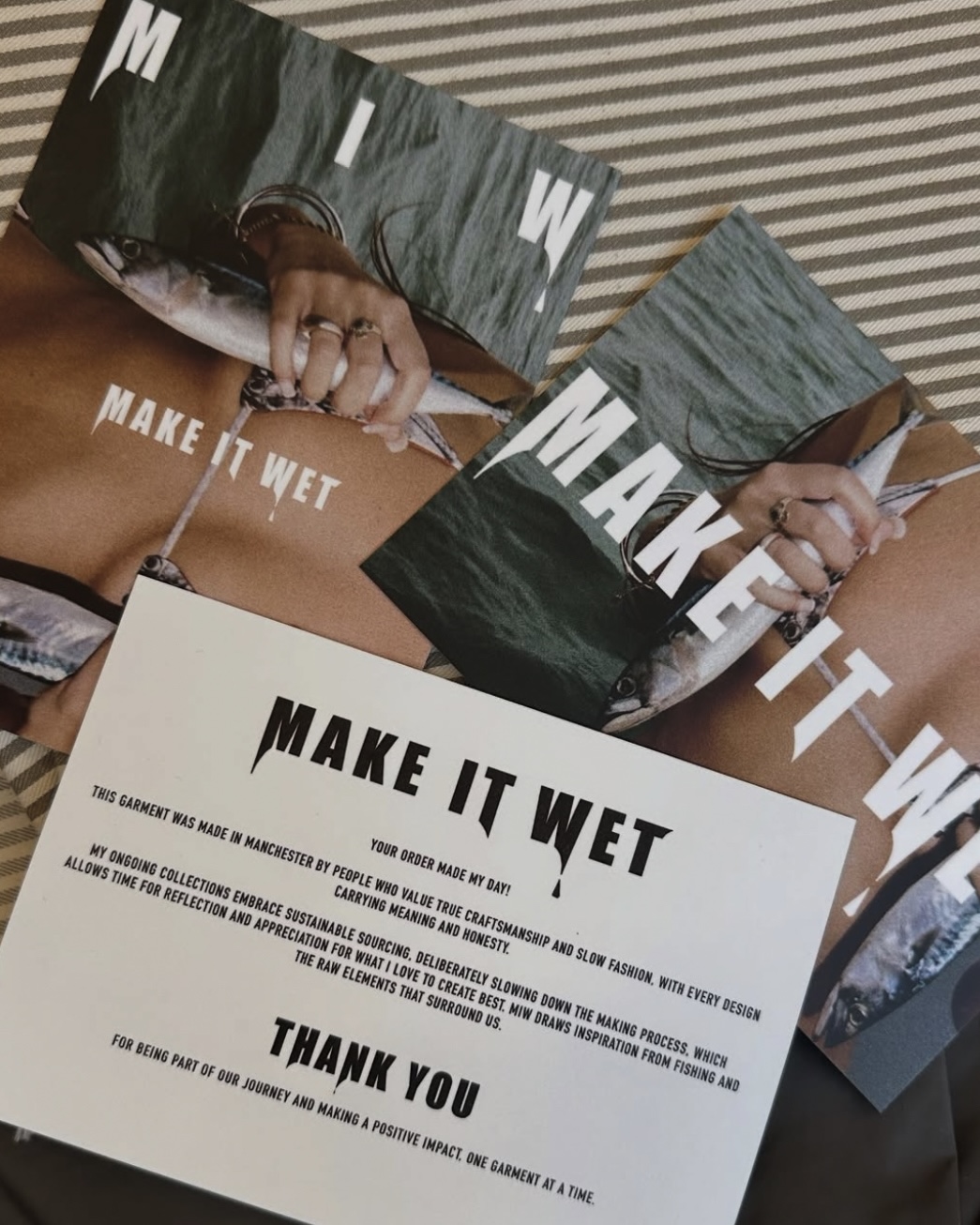
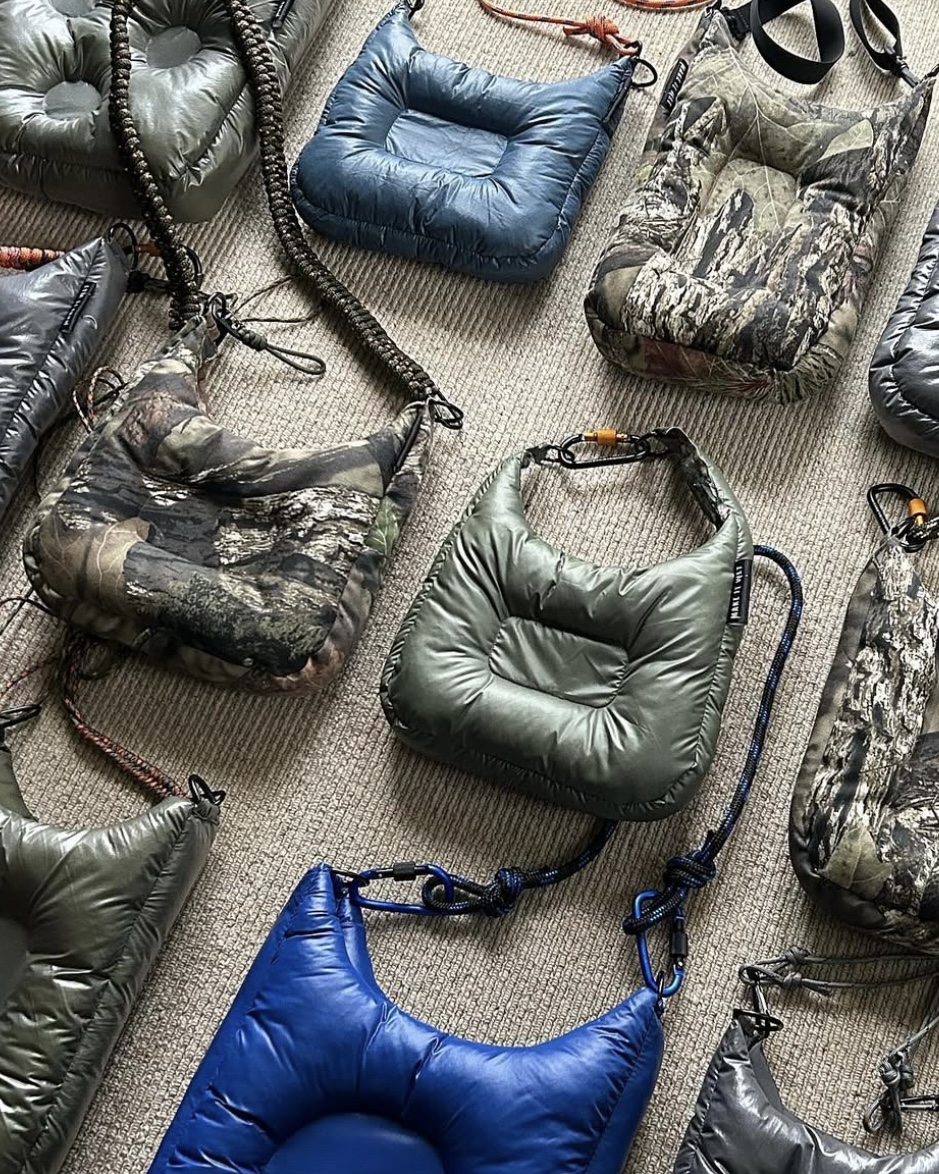
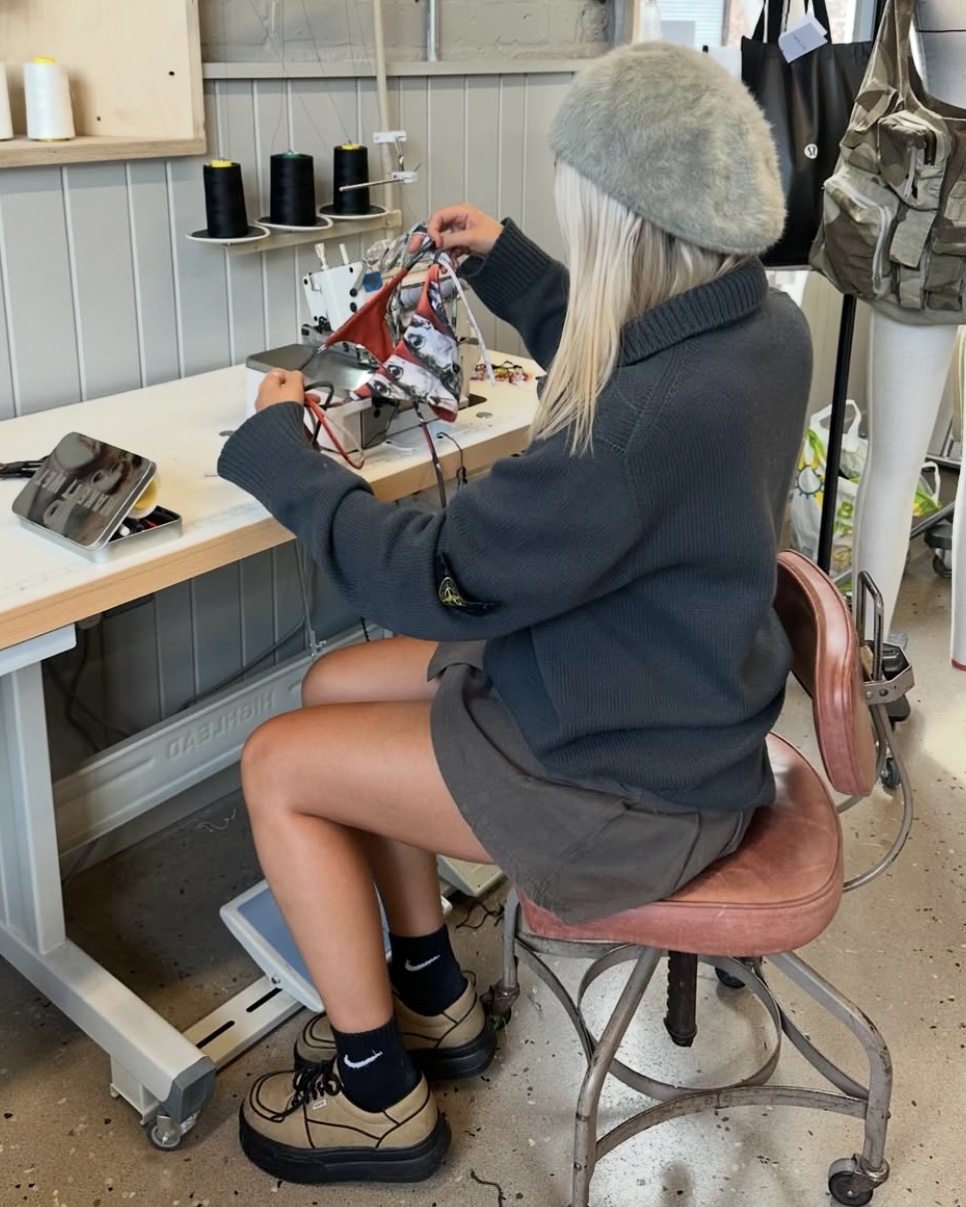
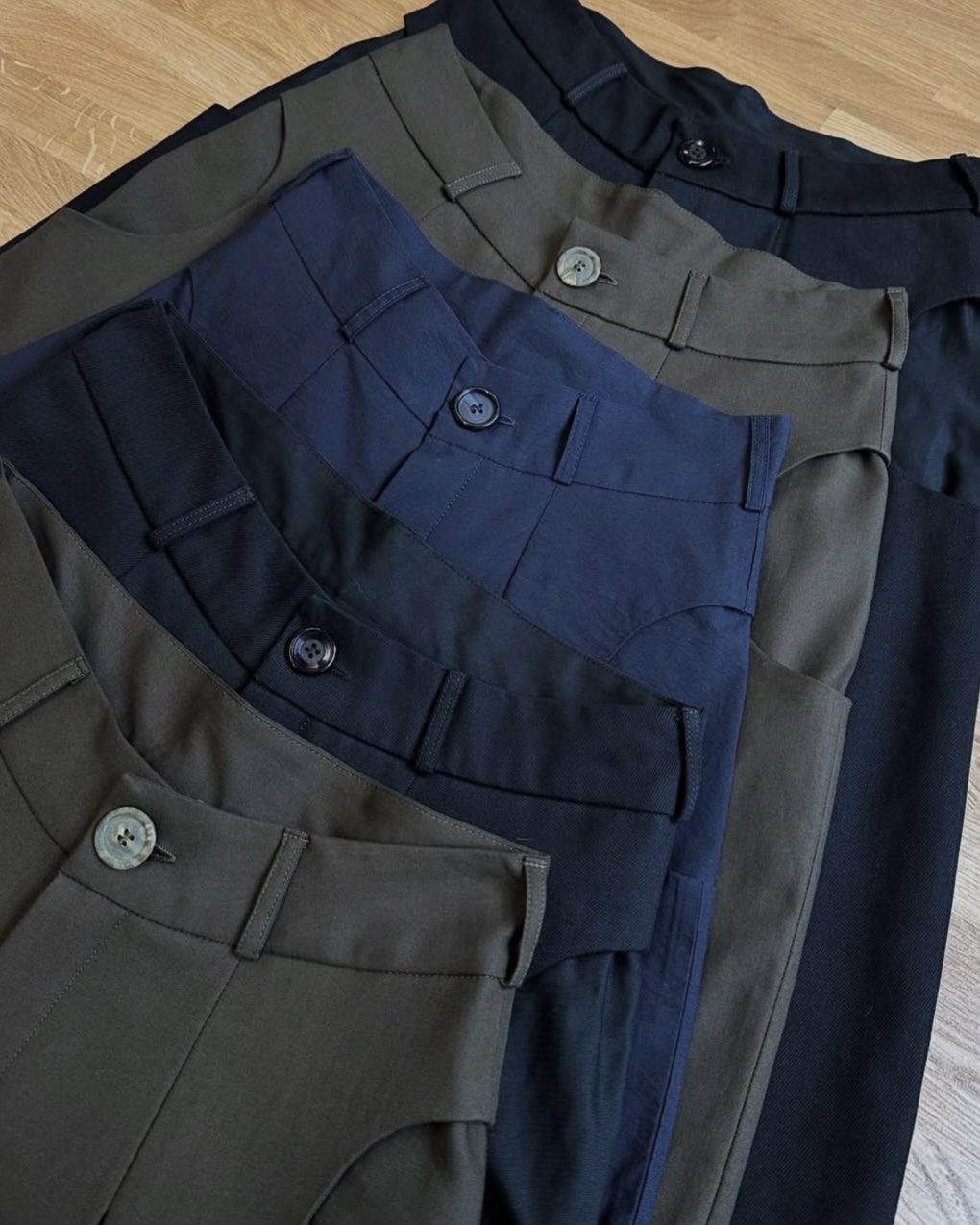
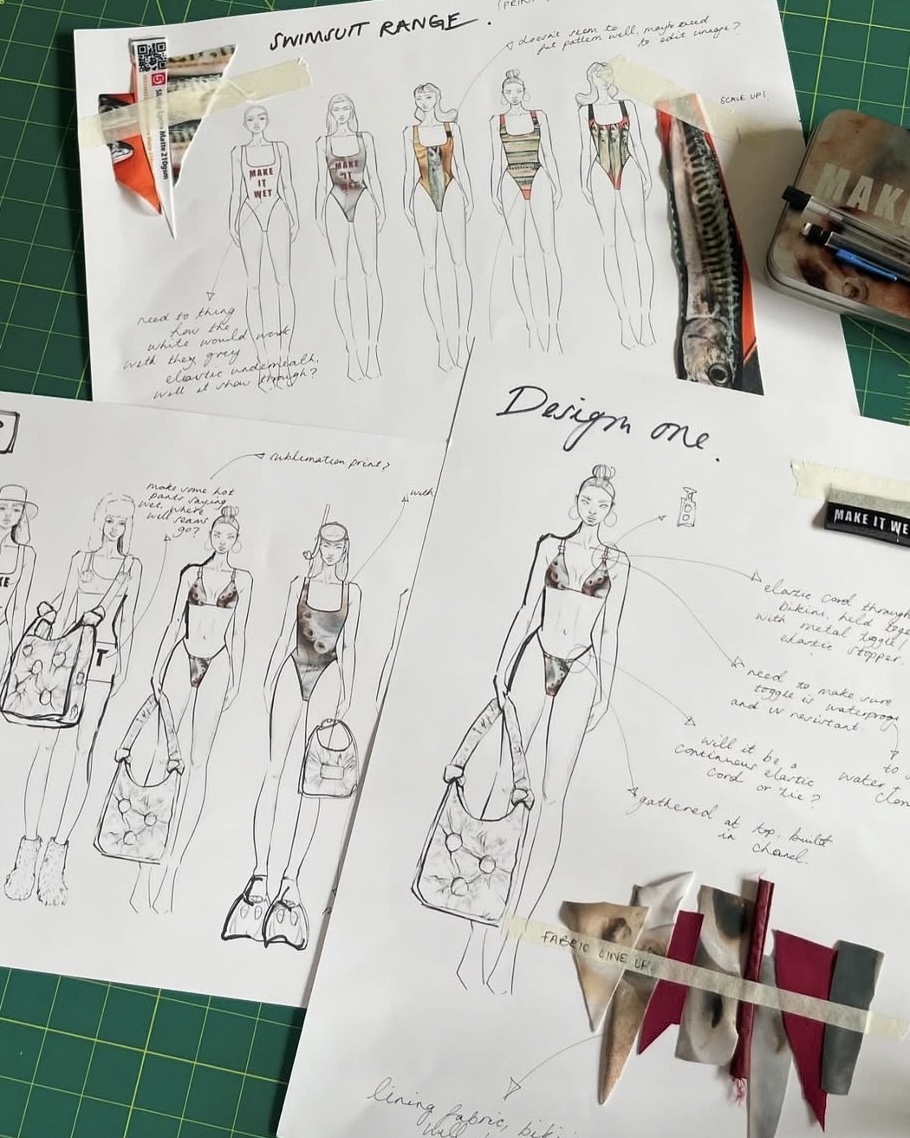
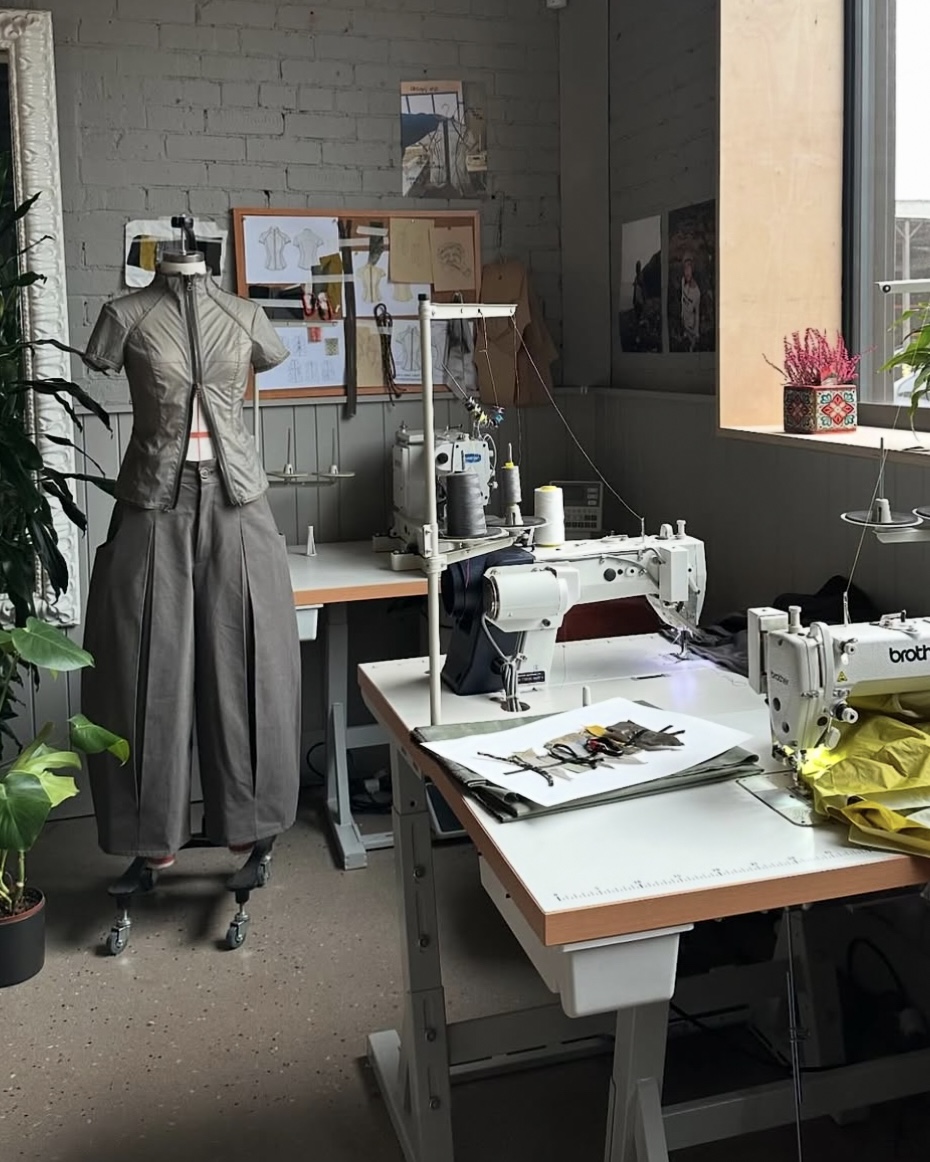
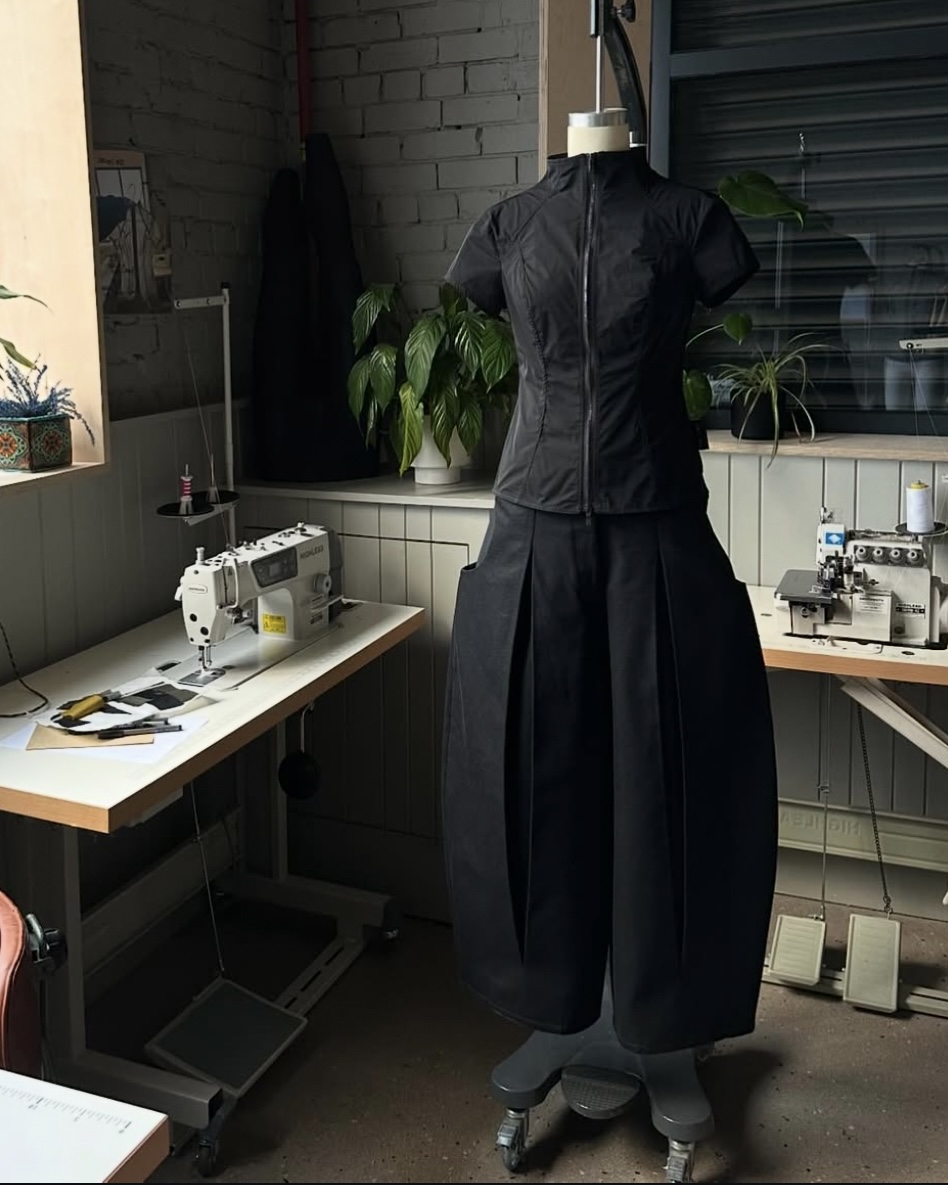
You never seem to shy away from working with difficult materials in your work, how much experimentation goes on within the process of making any garment?
Working with ripstop and other technical fabrics presents its challenges. I often find myself switching out sewing feet on my machine, especially when working with thin, slippery fabrics that can be a nightmare to sew. When a fabric is particularly tricky, I usually line it with something less slippery to help minimize movement after pinning. Despite the challenges, the unique look of ripstop fabrics truly excites me. For my bags, I only use deadstock fabrics, which means the size and shape of each one depends on how much scrap material I have. Exploring new materials is always a buzz and keeps my work fresh and exciting.
Throughout your work you use very distinct cuts and shapes whether that’s within the puffer bags, Extreme Pleats or even Shirts showing there are no limitations to what can be done. What process do you take when designing these?
The bag designs came about in Uni when I was experimenting with fabrics and techniques to replicate the circular shapes on octopus tentacles. This circular technique is a running motif throughout my work, which lead me to the idea for the circular pockets on the trousers. The whole process is experimentation for me, embracing the trial and error has made me more creative and far less afraid to fuck up.
Will Make It Wet ever do an event which will partake through an outdoors activity?
As I take most of my inspiration from the outdoors, it’s definitely important for me to have an outdoor activity soon. It would be amazing to be with a community of like-minded people celebrating nature as well as the brand.
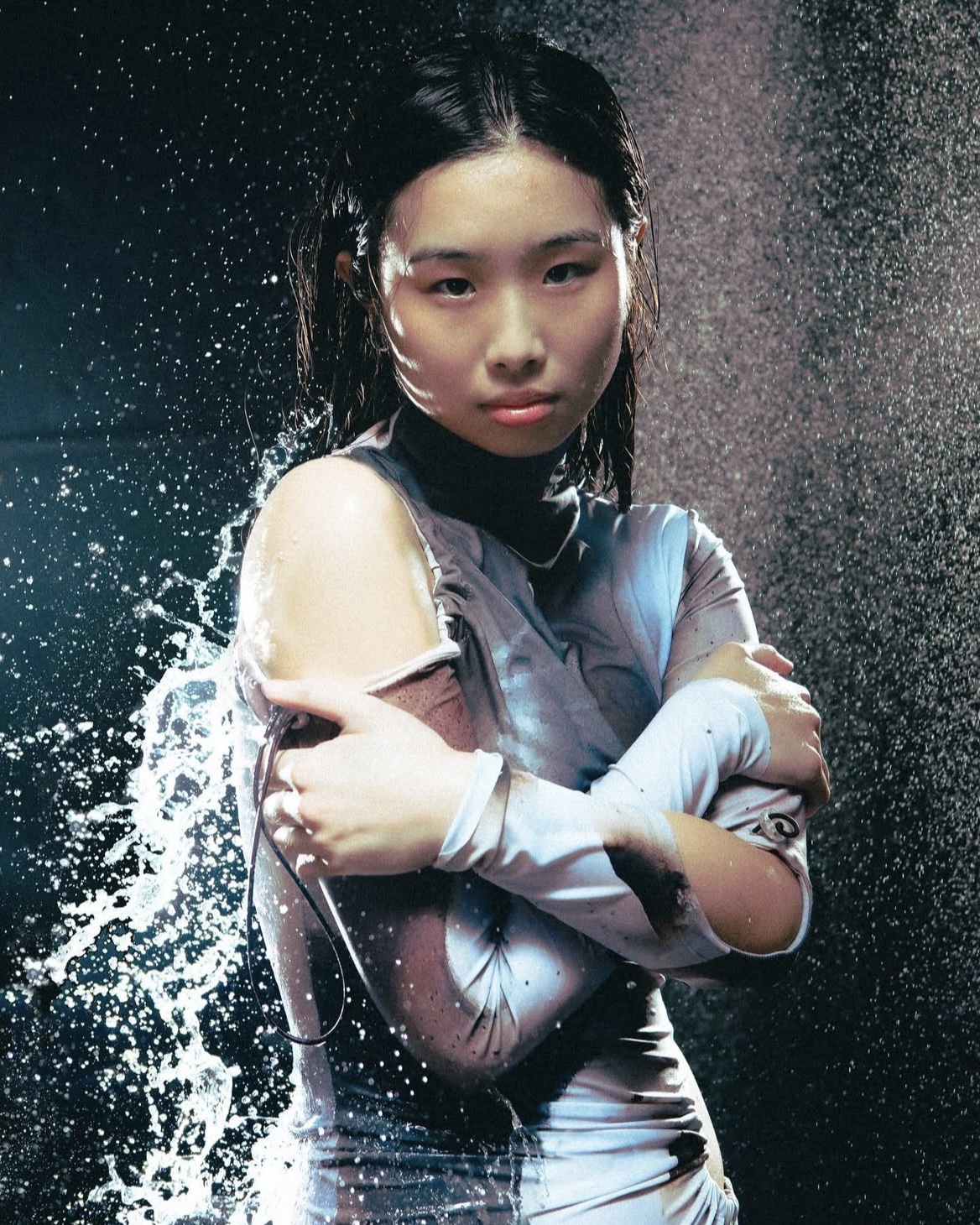
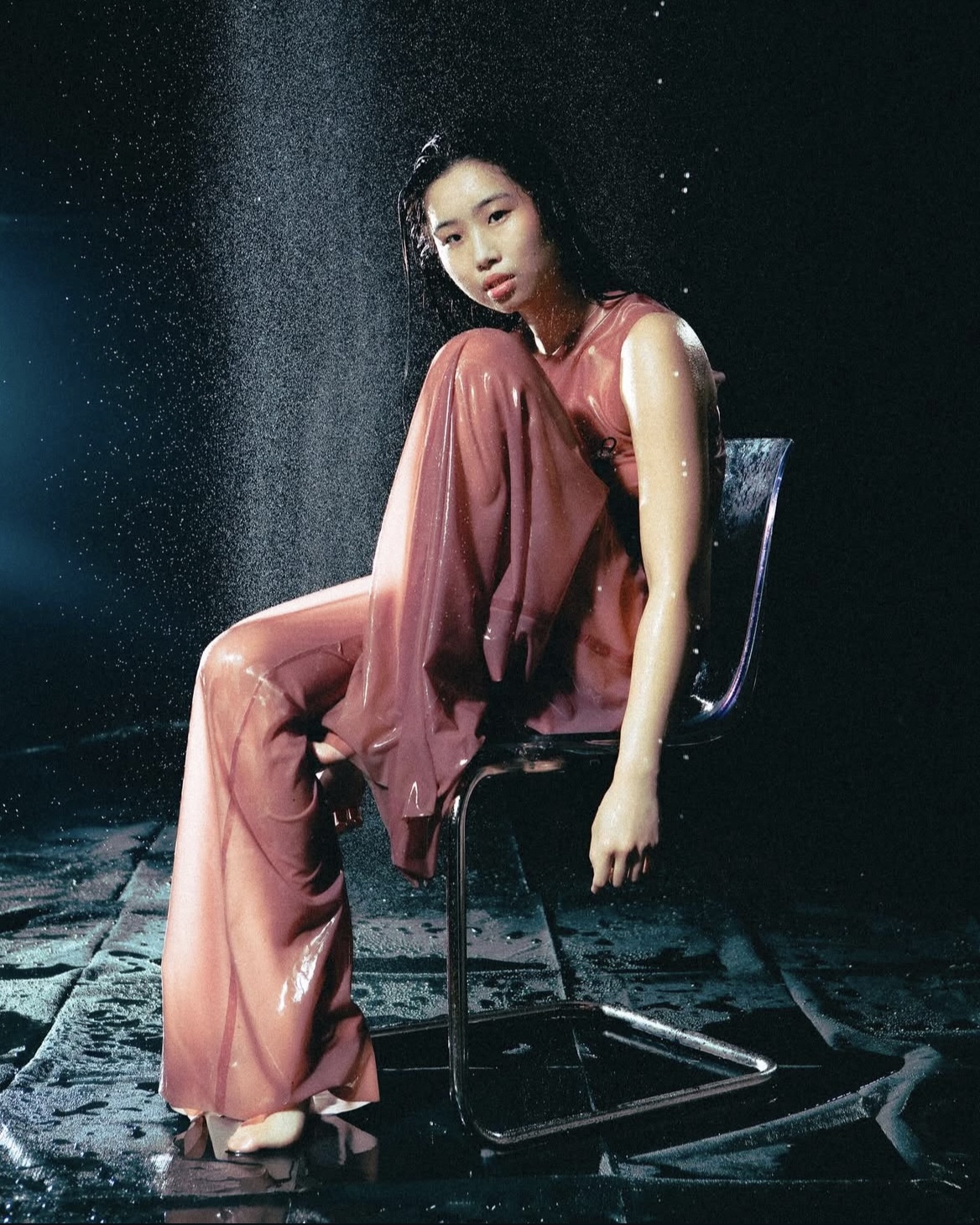
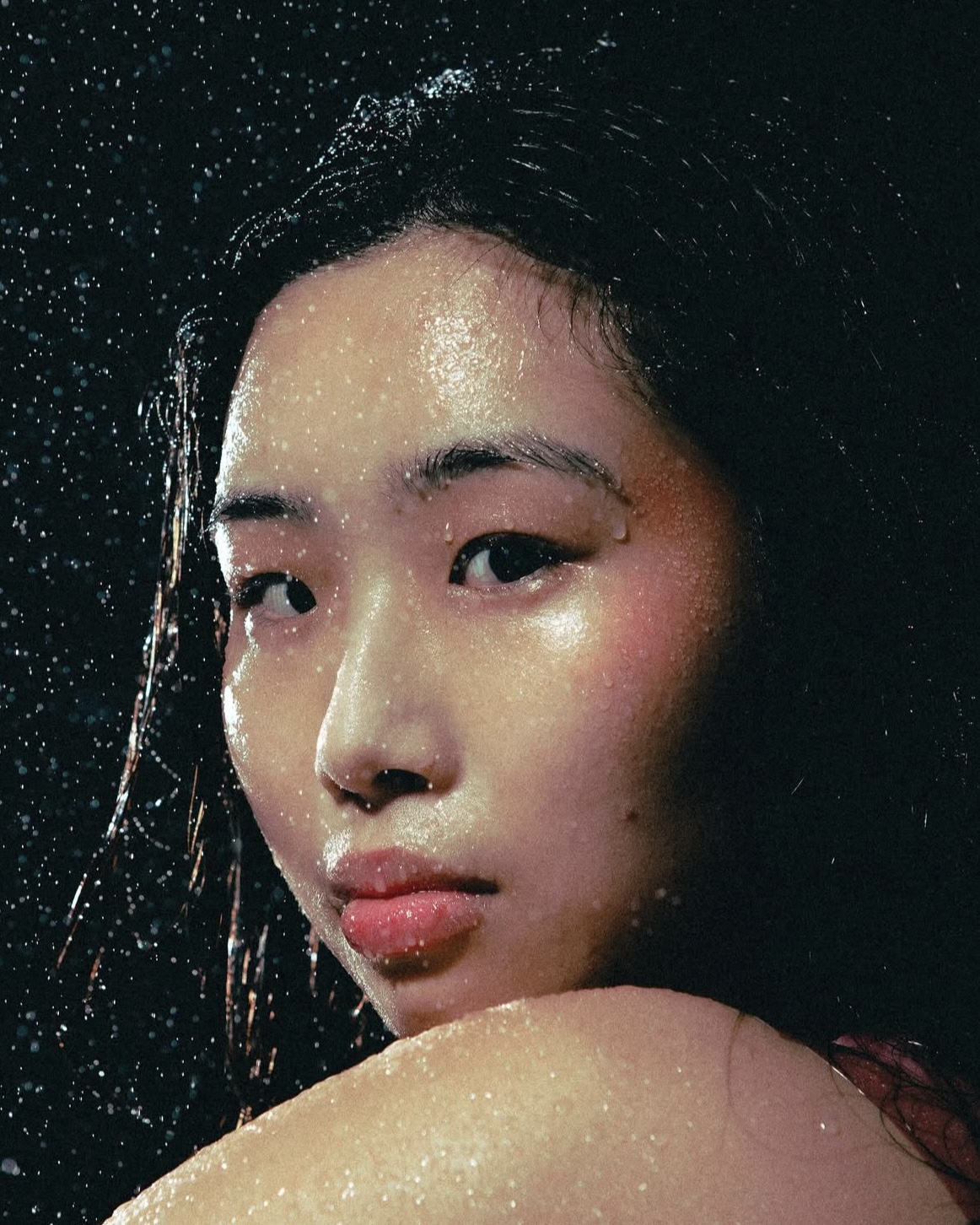
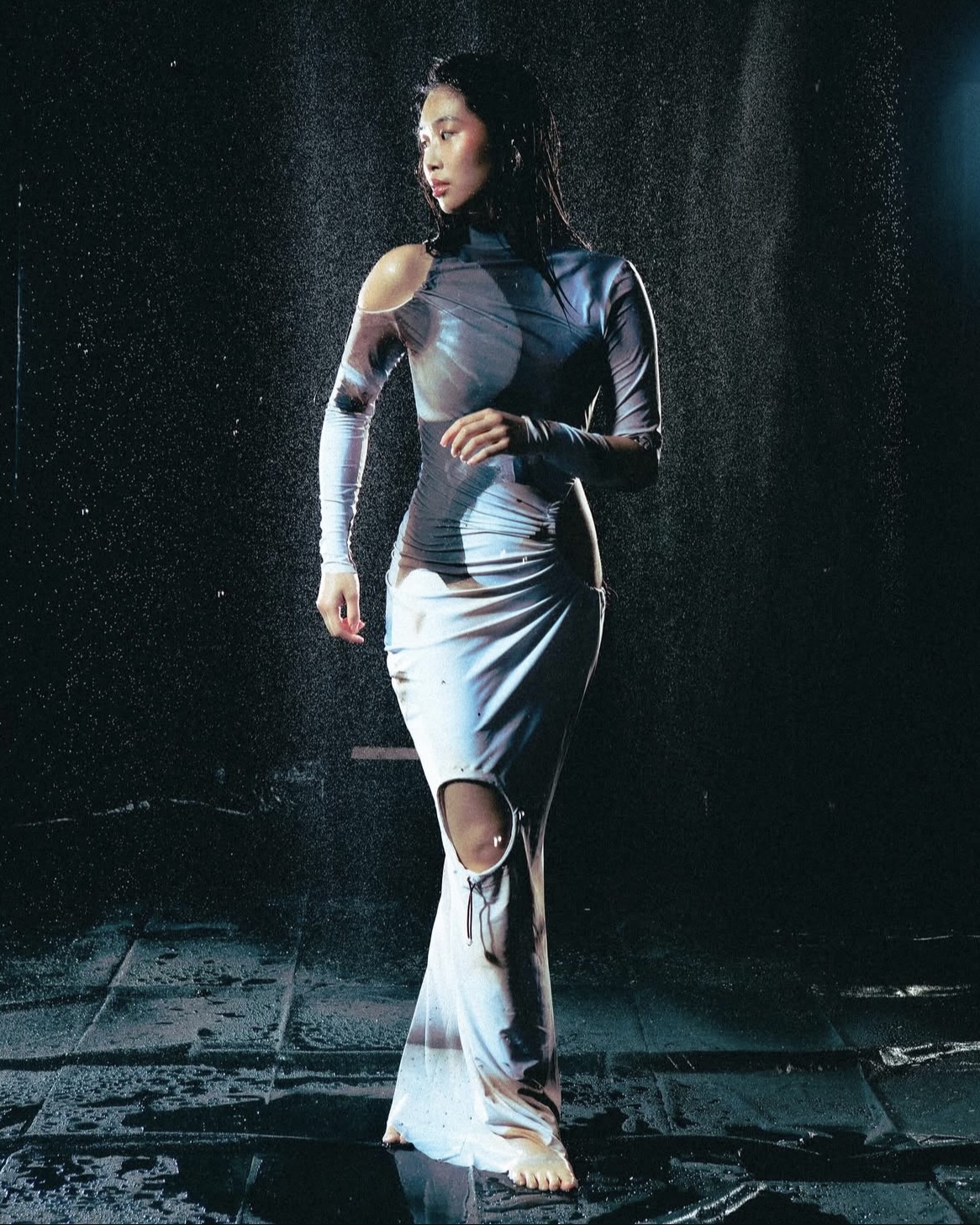
Images by: @by.benlister
Throughout your work, you use very distinct cuts and shapes. What process do you take when designing these?
The bag designs came about in Uni when I was experimenting with fabrics and techniques to replicate the circular shapes on octopus tentacles. This circular technique is a running motif throughout my work, which led me to the idea for the circular pockets on the trousers. The whole process is experimentation for me, embracing the trial and error has made me more creative and far less afraid to fuck up.
Talk to us more about your illustration process. What does that look like from start to finish?
The illustration process is huge for me; it allows me to communicate my ideas when I can’t find the words. Drawing and sketching allow me to capture textures, often inspired by nature and the organic patterns found in the outdoors. Since I also have a passion for the photography side of design, I often begin with outdoor imagery, creating a series of sketches based on those visuals. From there, I move into the garment design process.
What’s next for Make It Wet?
I’ve been working on some exciting new designs. I want to continue to create daring pieces and see how far I can take them. I would really love to expand my team and have a group of seamstresses and other creatives to work with; that’s something I’m really gassed for.
Interview by: Cameron Butterworth
